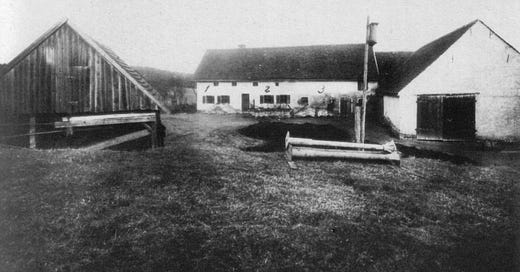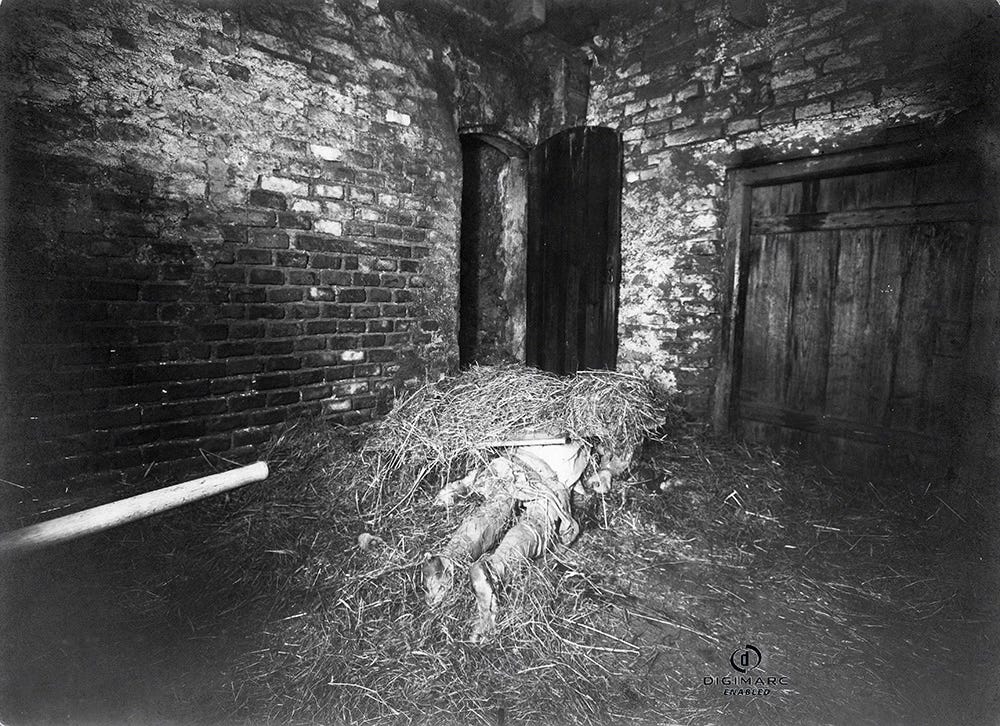(Content Warning: This blog post discusses disturbing and violent material.)
The Hinterkaifeck murders, a gruesome and baffling crime, have haunted Bavaria for over a century. As discussed on the Wyrd Wessex podcast, this case is not just a true crime story; it's a chilling puzzle with lingering questions and unsettling details that continue to fascinate and disturb. This blog post, informed by D.A. Chadwick's book The Hinterkaifeck Murders and the Wyrd Wessex podcast episode, delves into the details of this tragic event and explores the various theories surrounding it.
On the evening of March 31, 1922, on the isolated Hinterkaifeck farmstead, five members of the Gruber family and their newly arrived maid, Maria Baumgartner, were brutally murdered. The victims included 63-year-old Andreas Gruber, his 72-year-old wife Cäzilia, their widowed 35-year-old daughter Victoria Gabriel, her two children, 7-year-old Cäzilia and 2-year-old Josef, and the 44-year-old maid. The remoteness of the farm, surrounded by the "Witches' Woods," adds to the unsettling atmosphere of the case.
The events leading up to the murders are shrouded in strange occurrences. Six months prior, the previous maid quit, claiming the house was haunted. Andreas Gruber himself reported finding an unfamiliar newspaper from Munich, a missing house key, and footprints in the snow leading to the farm but not away. He also mentioned untied cows and seeing a mysterious figure in the woods. Despite these unsettling signs, Gruber refused to contact the police, a decision that, as discussed on the podcast, might be linked to his prior conviction for incest with his daughter, Victoria.
The day of the murders saw further disturbing details. Andreas and Victoria went to town, where Andreas, usually reserved, spoke of strange noises in the attic. That evening, the new maid, Maria, arrived, her sister noticing bruises on Victoria's face and arm. Young Cäzilia had previously told her teacher that her grandfather had hit her mother, who had then run from the house, suggesting a history of abuse.
Days later, concerned neighbors, including Lorenz Schlittenbauer, a neighbor who had a previous relationship with Victoria and possibly fathered Josef, discovered the horrific scene. Four bodies were found in the barn, bearing signs of brutal head injuries. The autopsies revealed the extent of the violence: the elder Cäzilia had seven fatal head wounds, Victoria had nine star-shaped wounds and strangulation marks, and young Cäzilia, who likely lived for hours after the attack, clutched clumps of her hair. Two-year-old Josef was found in his stroller, his skull fractured. Maria, the maid, was found covered in a blanket, her skull bearing cross-shaped marks.
Perhaps the most disturbing aspect, as highlighted on Weird Wessex, is that the killer(s) seemingly remained at the farm for some time after the murders. They stacked the bodies, baked bread, changed the calendar, ate the smoked meat, and tended to the livestock. They even tried to bury the bodies, but the frozen ground prevented it. The family dog, Spitz, was found wounded and terrified. A neighbor reported smoke from the chimney the night after the murders, noting a revolting smell. Had the killer(s) burned blood-stained clothing?
The investigation, as discussed on the podcast, was plagued by issues from the start. The crime scene was contaminated by locals and even investigators, and crucial forensic evidence, like fingerprints, was not secured. Theories about the motive ranged from robbery (though money was found at the farm) to something far more sinister.
Several suspects emerged, including Karl Gabriel, Victoria's husband, whose death in WWI was suspicious; Lorenz Schlittenbauer, whose behavior after the discovery of the bodies raised suspicion, and whose past relationship with Victoria and possible paternity of Josef added a complex layer to the case; and Paul Mueller, a possible serial killer connected to similar murders in the US.
Many theories lean into the paranormal, focusing on the initial maid's claims of a haunted house. However, both Andy and Craig lean towards a more grounded explanation, with suspicion falling on either Lorenz Schlittenbauer or Paul Mueller. The podcast highlights the suspicious circumstances surrounding Schlittenbauer, including the missing key and his seemingly undisturbed demeanor at the crime scene. They also acknowledge the possibility of Paul Mueller, given the similarities to other murders he was suspected of.
The Hinterkaifeck murders remain unsolved, a chilling reminder of the darkness that can exist within humanity. As Craig concludes, while the police may have their suspicions, the truth may never be fully known. The case continues to fascinate and disturb, a haunting testament to a brutal crime that refuses to be forgotten.
Check out the podcast episode on Hinterkaifeck here
Or watch it on Youtube here




